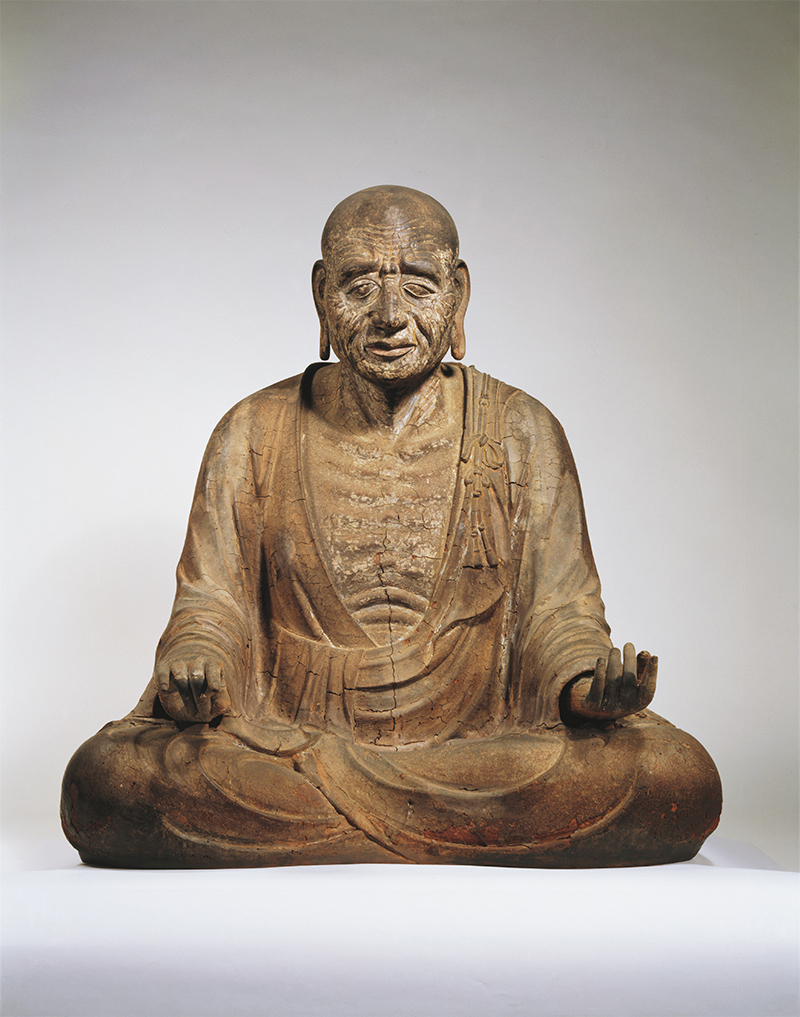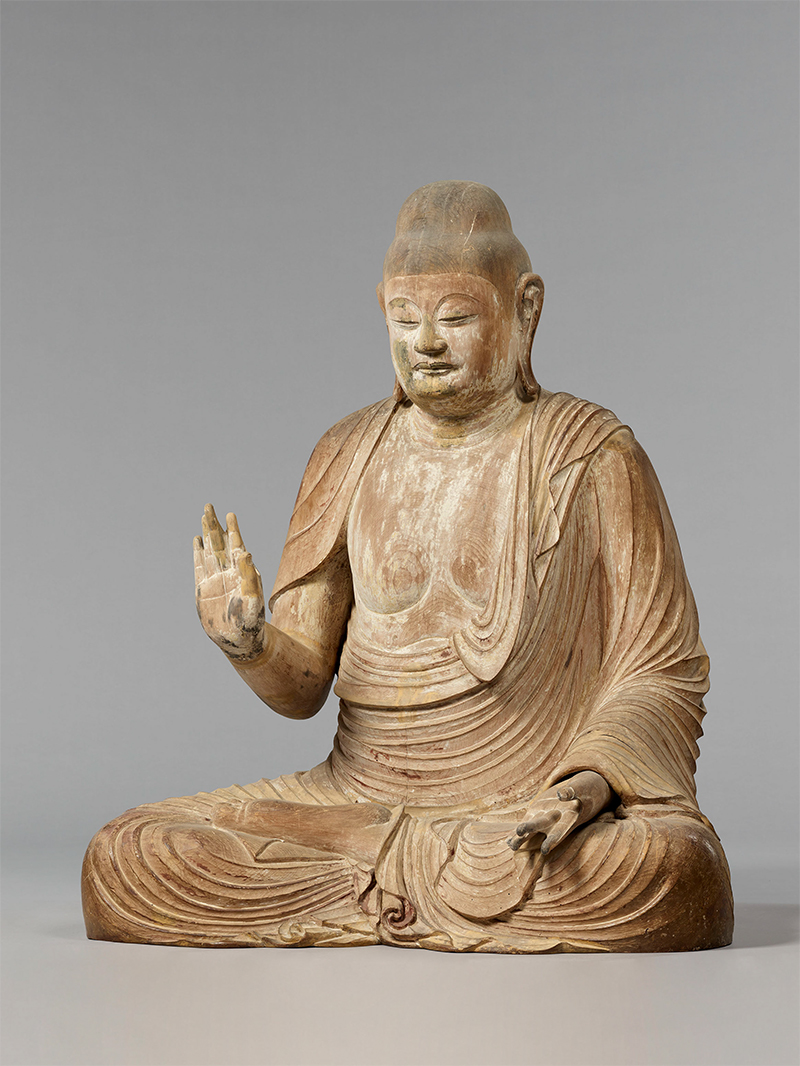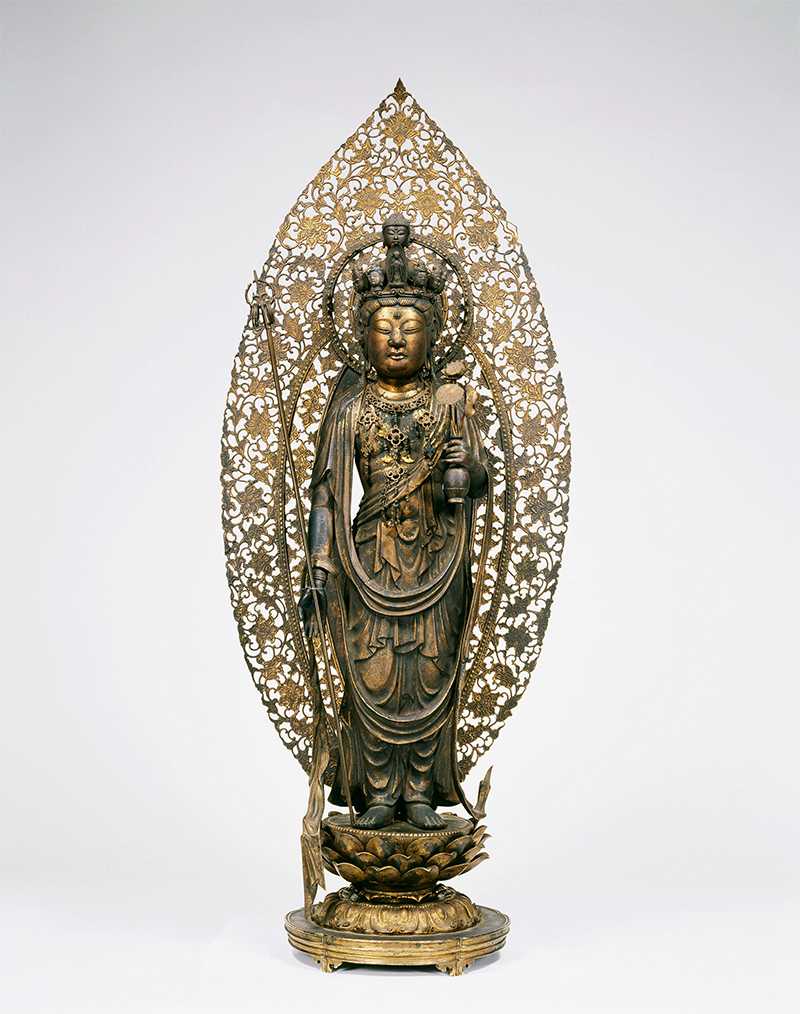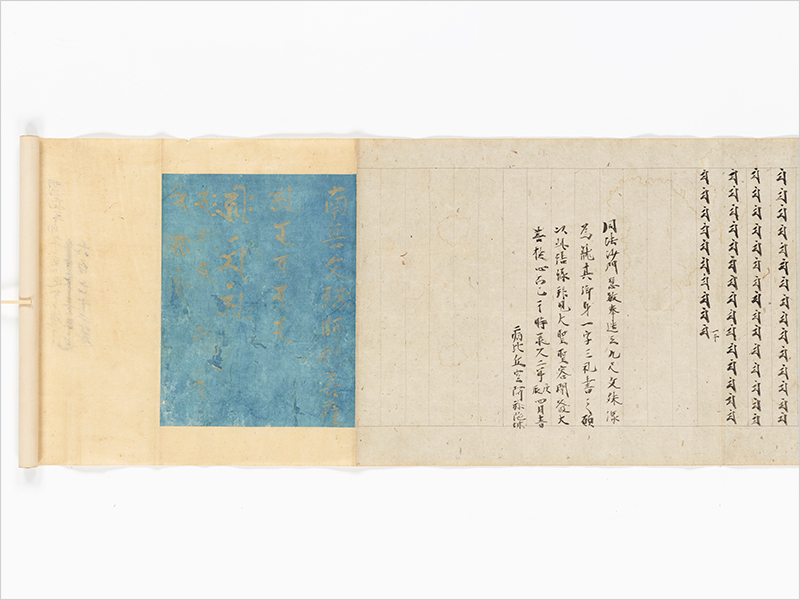特別企画 奈良大和四寺のみほとけ
-

国宝 十一面観音菩薩立像 平安時代・9~10世紀 奈良・室生寺蔵
展覧会のみどころ


岡寺
古代政治の舞台、大和の飛鳥。石舞台古墳などの多くの史跡を見下ろす高台に、岡寺はあります。飛鳥時代後期から奈良時代にかけて活躍した高僧、義淵僧正によって開かれたと伝えられ、今回出品される天人文甎は、寺の創建が確かに義淵僧正の活躍期にさかのぼることを物語っています。本尊は、奈良時代末に制作された、像高5メートル近くにおよぶ日本でもっとも大きな塑造の如意輪観音菩薩坐像です。観音のご利益あらたかな霊場として名高く、四季折々の花が美しい寺には、厄除け祈願の参拝者が後を絶ちません。
 
画像提供・奈良国立博物館
|
国宝 義淵僧正坐像
奈良時代・8世紀 奈良・岡寺蔵 岡寺を開いた義淵僧正の像と伝えられています。深く刻まれた皺に深い精神性を感じさせる日本古代高僧像の名作です。 |
室生寺
室生寺は、室生川の清流に面した、急峻な山の斜面にたたずむ真言宗室生寺派の大本山です。上流のうっそうとした木々の生える渓谷には、多くの洞窟が川に向かって暗い口を開いており、神秘的な雰囲気をたたえています。これらの洞窟には龍神が棲むと信じられ、その霊験は遠く都にも聞こえていました。奈良時代末期、こうした龍神信仰をもとに、室生寺は開かれました。以降、室生寺の霊山幽谷には宗派を問わず多くの僧がおとずれ、独特の仏教文化がはぐくまれてきました。寺に伝えられる多くの尊像は、この寺の深く豊かな歴史を雄弁に物語っています。
  |
国宝 十一面観音菩薩立像
平安時代・9~10世紀 奈良・室生寺蔵 ふっくらした丸顔と平行に整然と刻まれる衣文線が印象的な美しい像です。 |
|
国宝 釈迦如来坐像
平安時代・9世紀 奈良・室生寺蔵 木彫ならではの切れ味のするどく深い彫り口と腰高なプロポーションが特徴的な平安時代初期の一木彫像の傑作です。 |

画像提供・奈良国立博物館
|

画像提供・奈良国立博物館
国宝 釈迦如来坐像
平安時代・9世紀 奈良・室生寺蔵 木彫ならではの切れ味のするどく深い彫り口と腰高なプロポーションが特徴的な平安時代初期の一木彫像の傑作です。 |
長谷寺
長谷寺は、初瀬川の流れをのぞむ初瀬山の斜面に寺域が広がる、真言宗豊山派の総本山です。川が急流となり渓谷をかたちづくるこの地域は、「こもりくの初瀬」と呼びならわされ、神々がすまう土地と考えられてきました。こうした神々の聖地には、仏教の伝来以降、仏像が安置されるようになります。10メートルを超える本尊十一面観音菩薩立像も奈良時代8世紀初頭につくられ、その後焼失、再興を繰り返し、古来、霊験あらたかな観音様として人々の篤い信仰を集めてきました。春は桜と牡丹、夏は紫陽花、秋は紅葉、冬は冬牡丹と、境内の四季折々の彩りが参拝者の目を楽しませています。
 
画像提供・奈良国立博物館
|
重要文化財 十一面観音菩薩立像
鎌倉時代・13世紀 奈良・長谷寺蔵 左手に水瓶、右手は下におろして錫杖をとるという本像の姿は、霊験あらたかな本尊を模したもの。鎌倉時代の長谷寺式十一面觀音菩薩像の優品です。 |
安倍文殊院
飛鳥時代の政変、蘇我氏が天智天皇と藤原鎌足によってほろぼされた乙巳の変があった645年に、左大臣安倍倉梯麻呂が安倍氏の氏寺として建てた寺です。創建当時の本尊はわかりませんが、現在の本尊は、寺の移転とともに仏師快慶によってつくられた文殊五尊像です。総高7メートルを超える文殊菩薩騎獅像は、日本三大文殊の一つとして知られています。
 
画像提供・奈良国立博物館
|
国宝 文殊菩薩像像内納入品 仏頂尊勝陀羅尼・文殊真言等
鎌倉時代・承久2年(1220) 奈良・安倍文殊院蔵 快慶作文殊菩薩像の像内から発見された経巻。巻末には、平安時代末鎌倉時代前期の僧、明遍が承久2年(1220)に書写したことを記します。 |
開催概要 |
|||||||||||
| 会 期 | 2019年6月18日(火) ~9月23日(月・祝) | ||||||||||
| 会 場 | 東京国立博物館 本館11室 | ||||||||||
| 開館時間 | 9:30~17:00(入館は閉館の30分前まで) (ただし、会期中の金曜・土曜は21:00まで、9月20日(金)、21日(土)は22:00まで開館) |
||||||||||
| 休館日 | 月曜日、7月16日(火)、9月17日(火) (ただし7月15日(月・祝)、8月12日(月・祝)、9月16日(月・祝)、9月23日(月・祝)は開館) |
||||||||||
| 観覧料金 | 一般620円(520円)、大学生410円(310円) ※総合文化展観覧料および開催中の特別展観覧券(観覧当日に限る)でご覧いただけます。
|
||||||||||
| 交 通 | JR上野駅公園口・鶯谷駅南口より徒歩10分 東京メトロ銀座線・日比谷線上野駅、千代田線根津駅、京成電鉄京成上野駅より徒歩15分 |
||||||||||
| 主 催 | 東京国立博物館、日本経済新聞社 | ||||||||||
| 協 力 | 東海旅客鉄道株式会社 | ||||||||||
| お問合せ | 03-5777-8600(ハローダイヤル) | ||||||||||
